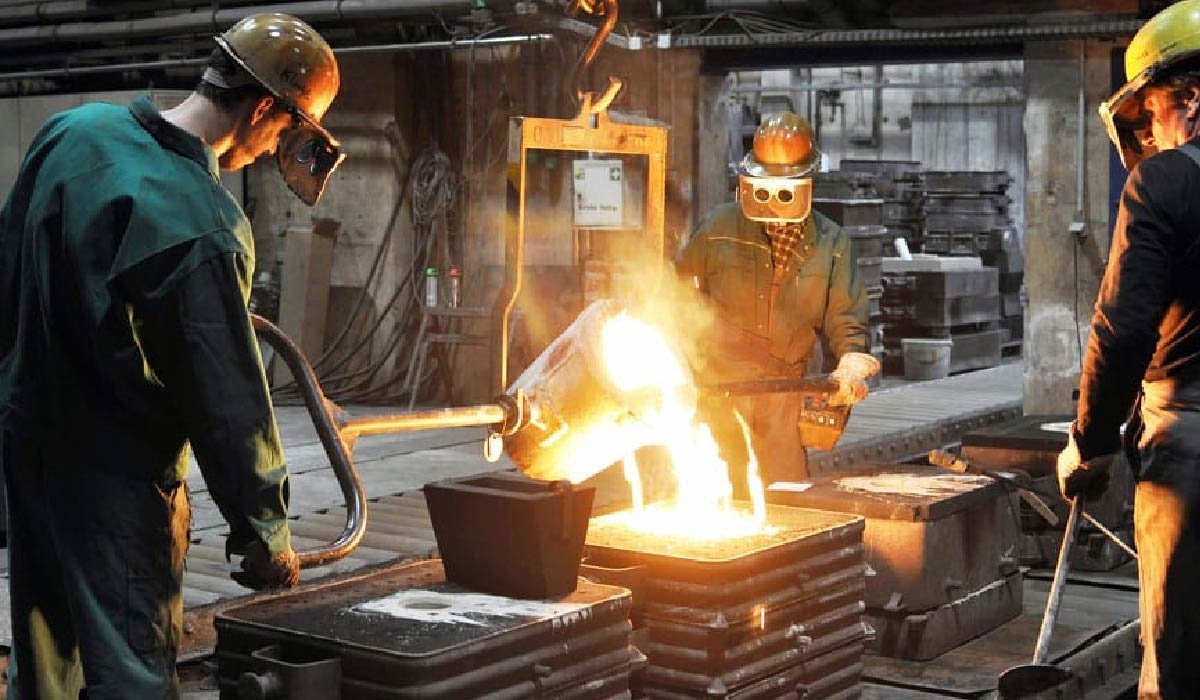Business
Iron and Steel Casting Applications in Construction

The construction industry, one of the pillars of modern infrastructure, has grown and evolved significantly with advances in technology and materials. Among the most critical components in the development of infrastructure are materials such as iron and steel, which are often utilised through a process known as casting. In this article, we delve into the pivotal role that casting solutions play in modern construction and how they contribute to the industry’s advancements.
The Significance of Iron and Steel in Construction
Iron and steel are indispensable materials in the construction industry. These metals provide strength, durability, and versatility, attributes that are essential in building frameworks, reinforcements, and a myriad of other structural components. The characteristics of iron and steel make them suitable for a wide range of applications within construction, ensuring that structures can withstand the tests of time and the elements.
Casting is a manufacturing process where molten metal is poured into a mould, which contains a hollow cavity of the desired shape, and is then allowed to solidify. This process enables the production of complex parts that are difficult to achieve through other manufacturing methods. The significance of iron and steel casting lies in their contribution to creating components that are essential to the construction industry’s functionality and efficiency. To explore more about this process, visit www.fccastingsolutions.com.
The Process of Iron and Steel Casting
Iron and steel casting involves a multistep process that generally includes melting the metal, moulding, pouring, solidification, and finishing. High-quality casting ensures that each component meets specific requirements and standards crucial for the safety and longevity of structures. It is through iron and steel casting services that many specialised construction components are brought into existence.
Types of Construction Components Made Through Casting
The types of components made through casting for construction purposes are diverse. They include, but are not limited to, structural supports, beams, columns, anchoring systems, and fittings. The versatility of casting also allows for the production of decorative elements, which contribute to the aesthetics of a building while maintaining the necessary structural integrity. These elements often require a high degree of customisation and precision, which is where casting excels.
The Role of Custom Casting in Construction
Custom casting solutions enable the creation of tailored parts that meet specific engineering requirements of construction projects. This adaptability is especially important in contemporary construction, where designs can be intricate and unique. The provision of custom metal casting services is instrumental in realising even the most complex architectural visions, making it a mainstay in the industry.
Moreover, custom casting supports sustainable practices within construction. By allowing for the manufacture of parts to exact specifications, there is a reduction in material waste. Additionally, cast components can be designed to optimise material use and enhance energy efficiency in buildings, aligning with greener building initiatives.
Advantages of Iron and Steel Casting in Construction
The iron and steel casting processes come with a plethora of advantages that are beneficial to the construction sector. One of the main benefits is the cost-effectiveness of producing large quantities of strong, wear-resistant parts. Mass production through casting can lead to economies of scale, resulting in cost savings for construction projects.
Another advantage includes the ability to create highly complex shapes and designs that would otherwise be impossible or too expensive to fabricate through forging or machining. This is because the molten metal can flow into intricate moulds, capturing detailed features and complex geometries with precision.
Quality and Testing in Casting for Construction
Quality assurance is critical in the casting process, particularly for construction applications where safety and reliability are paramount. Testing methods such as dimensional inspection, non-destructive testing (NDT), and mechanical property evaluation are employed to ensure that cast components meet stringent industry standards.
Advancements in metallurgical technology and testing allow for continuous improvement in the quality of cast components, with stringent controls placed on every stage of the casting process. This leads to the production of components with greater tolerance, strength, and performance, directly impacting the safety and durability of building structures.
Challenges and Innovations in Casting for Construction
Despite its many benefits, casting for construction also poses challenges, such as dealing with the complex nature of metal behaviour at high temperatures and ensuring uniformity in large-scale production. However, the industry is constantly evolving, with innovations in metallurgy, moulding techniques, and environmental considerations driving progress.
New formulations of iron and steel, together with improved casting methods, are regularly being developed to enhance performance, reduce costs, and minimise environmental impact. The quest for lighter, stronger, and more environmentally friendly materials in construction is one that continues to be driven by the advancements in casting technology.
Conclusion
The importance of iron and steel casting in construction cannot be overstated. As the backbone of modern infrastructure, the role that casting solutions fulfil in building a durable, efficient, and safe built environment is crucial. Through dedicated iron and steel casting services and an ongoing commitment to innovation, the construction industry is equipped to meet the demands of today’s architectural challenges and pave the way for the sustainable development of tomorrow’s skyline.
In summary, whether it is through custom-crafted components or mass-produced parts, casting remains an integral and dynamic element in the world of construction. It continues to fuel the industry, solidifying its place as a key player in erecting the edifices of the future.
-

 Celebrity1 year ago
Celebrity1 year agoWho Is Jennifer Rauchet?: All You Need To Know About Pete Hegseth’s Wife
-

 Celebrity1 year ago
Celebrity1 year agoWho Is Mindy Jennings?: All You Need To Know About Ken Jennings Wife
-

 Celebrity1 year ago
Celebrity1 year agoWho Is Enrica Cenzatti?: The Untold Story of Andrea Bocelli’s Ex-Wife
-

 Celebrity1 year ago
Celebrity1 year agoWho Is Klarissa Munz: The Untold Story of Freddie Highmore’s Wife
















